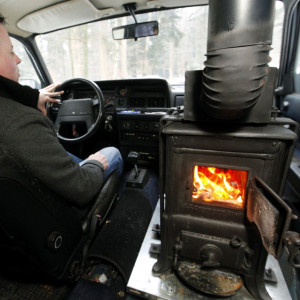When the weather hits extremes, your car’s climate control plays a larger role than ever. We often have high expectations of our HVAC units, hoping they can freeze a bag of peas in the summer with the A/C on and boil a pot of water in the winter with the heat on full blast. In reality, all we really ask is that our cabin can maintain a comfortable 68-72º range, which is a common living temperature. What's great about most cars built in the last 20 years is that they are capable of doing this all on their own, with minimal driver input.
I’ve noticed that although automatic climate control is becoming more mainstream, most owners either do not know how to use it, or selectively choose not to use it. To be honest, a huge pet peeve of mine is seeing a high end vehicle with the climate control readout displaying 85º for both zones, indicating the owner just wants it set to “hot” and intends to fiddle with the fan speed to control their comfort. The same peeve holds true in the summer. Seeing a friend's BMW with the climate controls bottomed out in the low 60º range and always modifying the fan speed to suit their comfort level. Isn’t this a step backwards?

One of the most loved features in my ’99 Volvo S70 is its automatic climate control or ECC (Electronic Climate Control), as Volvo calls it. It’s one of the systems I hardly ever have to touch. It just works. For me, 72º with the fan and vents set to automatic is a year-round setting, and I trust the unit to maintain that temperature diligently. If it gets a bit toasty, notching it down to 70º or 68º drops the temp in short order without having to blast the fan like in a conventional manual climate control system. I love it and would have a hard time buying a car without it in the future.
So, why wouldn’t someone want to use it?
Yes, there are circumstances in which you may not want to use automatic climate control. Sometimes an adequate defrost in the winter requires the fan set to full and an automatic system may not recognize this need.
More often than not, a fault in the system is what deters most people from using it. Automatic climate control systems typically use a larger number of temperature sensors and damper motors than their manual counterparts. Once one or more fail, the system may go into a type of limp mode, where it either operates poorly or doesn’t operate at all.
Lastly, one of the most common reasons I see this ingenious system ignored is because of cold starts in the winter. When a cold vehicle is turned on, it’s common sense to have a manual climate system turned off, otherwise you’ll get blasted with cold air. Modern automatic climate control systems alleviate this issue and a lot of drivers are unaware of it. By keeping the climate control’s automatic function enabled on cold starts, you allow it to warm the cabin the moment your engine’s coolant is warmed up. The climate control will gradually increase the fan speed from zero until the cabin is warm.
That being said, how do you use your car's automatic climate control, and why?











